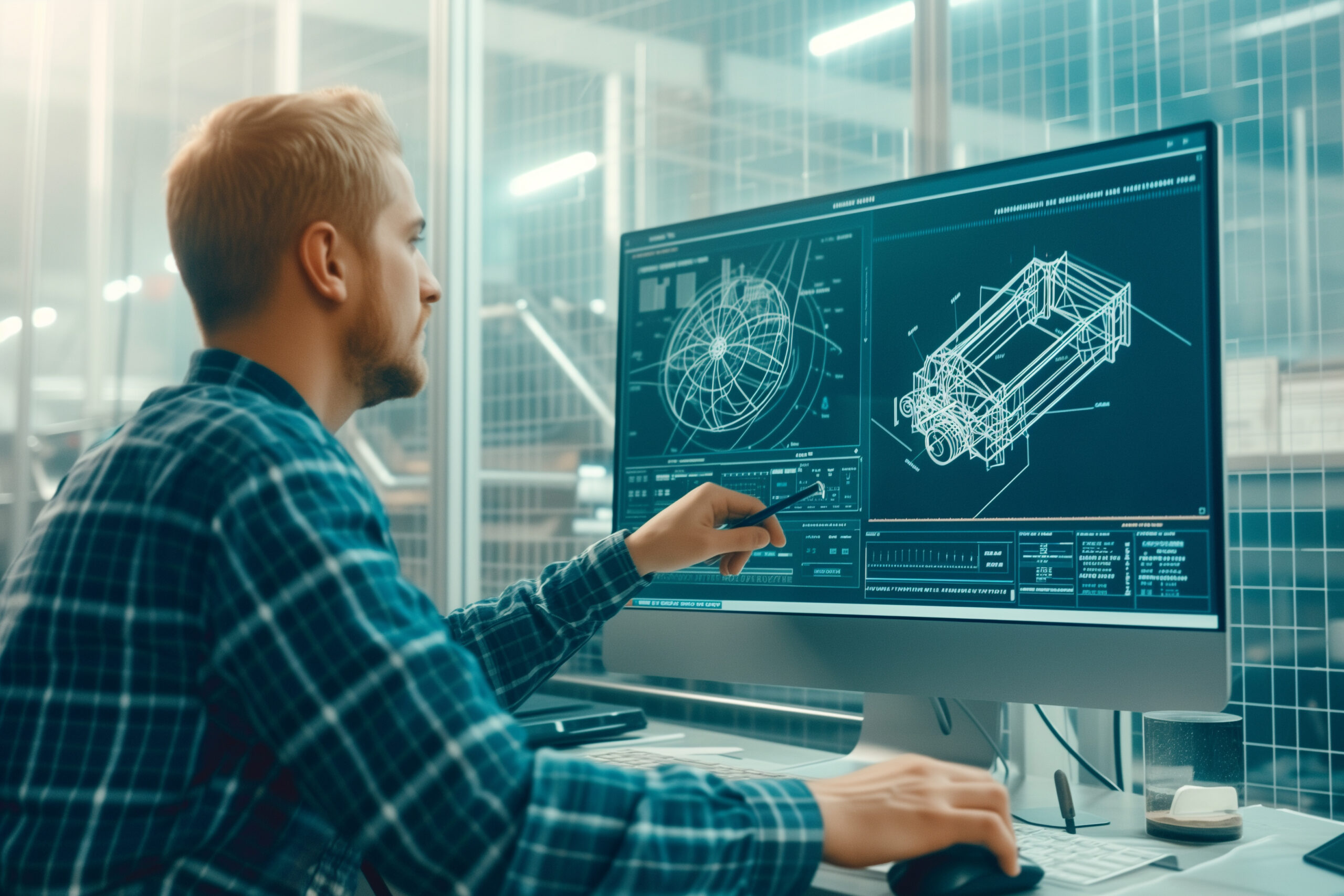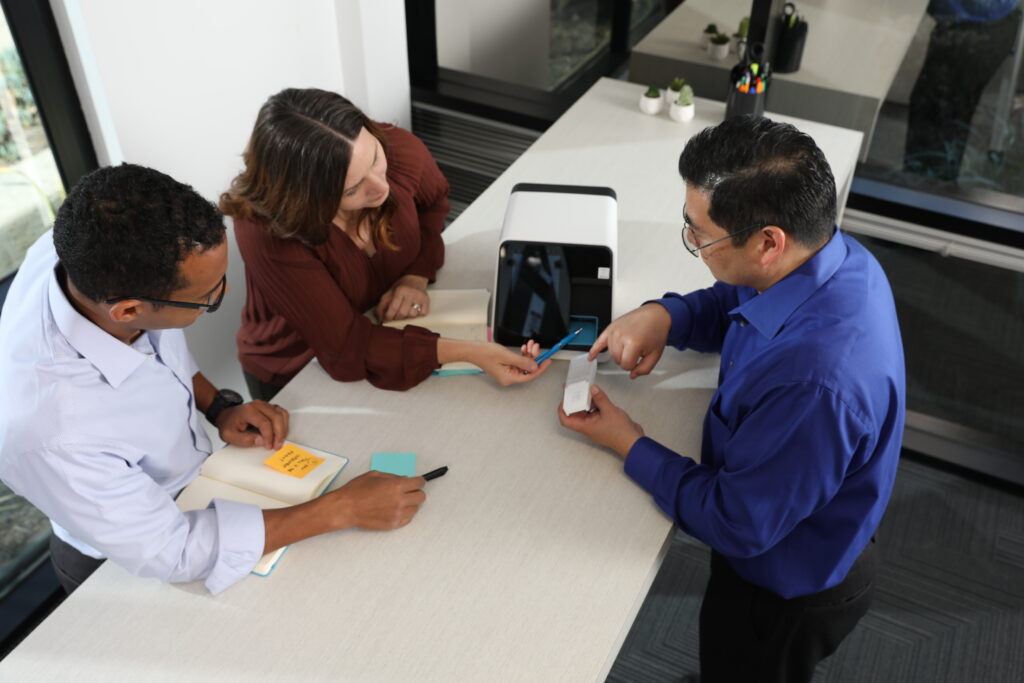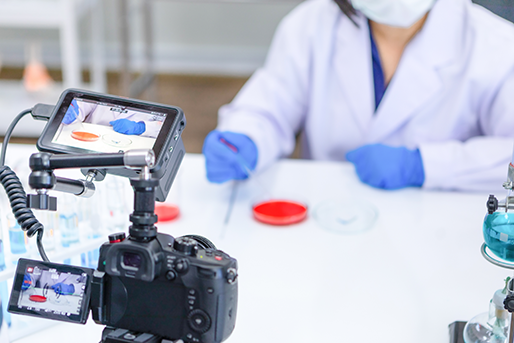Housing + Structure
Many product designs have one thing in common, there are a collection of devices that need mounting into a structure and a cover encloses the assembled item. Hidden in the detail of that high level need is the art of engineering a good solution.
- Devices & Mounting
- Covers
- Assembly Design
- Serviceability
- Material Optimization
- Waste Management
Many product designs have one thing in common, there are a collection of devices that need mounting into a structure and a cover encloses the assembled item. Hidden in the detail of that high level need is the art of engineering a good solution.
Devices and mountings:
Do the devices have properties or risks to be managed? Vibration, heat, fluid leakages (from the parts themselves or a user’s actions), particulate generation from moving parts, etc. are all factors that require experience and careful management. For example, sensitive optics measurements will not be performed correctly in the face of vibration from movement else where in the design. Perhaps isolation is needed or system design to time measurements to happen when not moving, these are examples of solutions in this space. Then there other considerations to account for such as material selection, environmental factors, EMC compliance, safety of which any one of these items is capable of causing issues with your end goal.
Covers design is the intersection of user interactions, industrial design and manufacturing techniques. There are significant trade offs to be made on style vs cost vs manufacturing techniques/tolerances vs complexity with number of units per annum being an important consideration also:
- Folded or stamped sheet metal is low cost but limited in shapes and angles.
- Injected molded covers provide flexibility, more styling options, but higher tolerances and careful design to minimize expensive tooling costs.
- 3D printed parts allow complex features, but a rougher finish and more expensive per piece due to printing times.
The cost of a final product is made of several components:
- The Bill of Materials (BoM) & the various component costs
- Packing and manuals
- Freighting
- Manufacturing cost base
- Manufacturing profit margin
- Assembly and test costs
The cost of assembly and test is directly proportional to the length of time it takes to assemble and test a product, which is why our designer work with you to determine the path forward. Lowering final product cost tends to require more design effort upfront, but is there a return on investment for doing so? Our business unit leaders and project managers in the Planning team can also support you in navigating this space.
An often left out detail of overall design philosophy is the post product launch serviceability needs. Is the design to be field serviceable? Retuned to a central location? Throwaway/written off?
Determining this strategy as input to the design is important to provide guidance to design teams on how to approach the assembly of the design – access points, change out features and connections, size/cost of materials, special field tools (calibration, alignment, etc.)
Production cost can increase dramatically through technology choices for custom part construction. For example, machining a block of material down to a small item generates a tremendous of waste in terms of material and processing costs. Optimizing designs for efficient use of material is second nature to Invetech’s design team.
Utilizing fabrication techniques such as welded frames, castings, extrusions (use of standard off the shelf framing types) and the like, the Invetech team works with you to create the solution for your application.
Where there are inputs to product or system, there is typically waste to manage.
Waste products can be solid, liquids or gases and determining what these are and how these are to be handled can be difference between an okay user experience and great user experience, not to mention safety and regulatory needs.
In high volume processing machines, bins and waste tanks are typically employed to collect waste, enable the user to free up time for other activities. At the lower end of throughput, it is common for users to remove materials and making sure these are safe and handleable is centric to the Invetech design process.
- Devices & Mounting
- Covers
- Assembly Design
- Serviceability
- Material Optimization
- Waste Management
Many product designs have one thing in common, there are a collection of devices that need mounting into a structure and a cover encloses the assembled item. Hidden in the detail of that high level need is the art of engineering a good solution.
Devices and mountings:
Do the devices have properties or risks to be managed? Vibration, heat, fluid leakages (from the parts themselves or a user’s actions), particulate generation from moving parts, etc. are all factors that require experience and careful management. For example, sensitive optics measurements will not be performed correctly in the face of vibration from movement else where in the design. Perhaps isolation is needed or system design to time measurements to happen when not moving, these are examples of solutions in this space. Then there other considerations to account for such as material selection, environmental factors, EMC compliance, safety of which any one of these items is capable of causing issues with your end goal.
Covers design is the intersection of user interactions, industrial design and manufacturing techniques. There are significant trade offs to be made on style vs cost vs manufacturing techniques/tolerances vs complexity with number of units per annum being an important consideration also:
- Folded or stamped sheet metal is low cost but limited in shapes and angles.
- Injected molded covers provide flexibility, more styling options, but higher tolerances and careful design to minimize expensive tooling costs.
- 3D printed parts allow complex features, but a rougher finish and more expensive per piece due to printing times.
The cost of a final product is made of several components:
- The Bill of Materials (BoM) & the various component costs
- Packing and manuals
- Freighting
- Manufacturing cost base
- Manufacturing profit margin
- Assembly and test costs
The cost of assembly and test is directly proportional to the length of time it takes to assemble and test a product, which is why our designer work with you to determine the path forward. Lowering final product cost tends to require more design effort upfront, but is there a return on investment for doing so? Our business unit leaders and project managers in the Planning team can also support you in navigating this space.
An often left out detail of overall design philosophy is the post product launch serviceability needs. Is the design to be field serviceable? Retuned to a central location? Throwaway/written off?
Determining this strategy as input to the design is important to provide guidance to design teams on how to approach the assembly of the design – access points, change out features and connections, size/cost of materials, special field tools (calibration, alignment, etc.)
Production cost can increase dramatically through technology choices for custom part construction. For example, machining a block of material down to a small item generates a tremendous of waste in terms of material and processing costs. Optimizing designs for efficient use of material is second nature to Invetech’s design team.
Utilizing fabrication techniques such as welded frames, castings, extrusions (use of standard off the shelf framing types) and the like, the Invetech team works with you to create the solution for your application.
Where there are inputs to product or system, there is typically waste to manage.
Waste products can be solid, liquids or gases and determining what these are and how these are to be handled can be difference between an okay user experience and great user experience, not to mention safety and regulatory needs.
In high volume processing machines, bins and waste tanks are typically employed to collect waste, enable the user to free up time for other activities. At the lower end of throughput, it is common for users to remove materials and making sure these are safe and handleable is centric to the Invetech design process.



